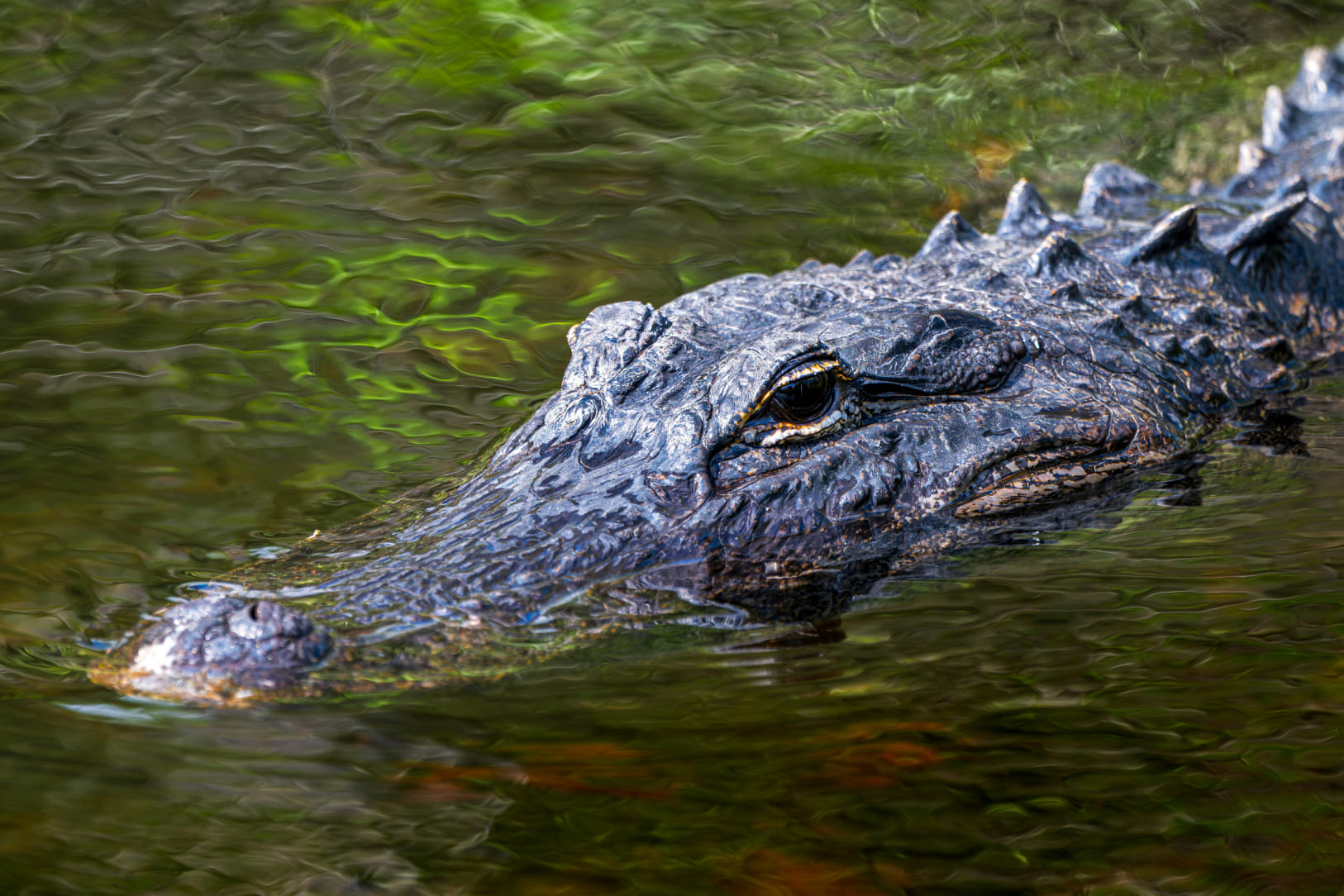
The American Alligator, a powerful and ancient reptile, is a keystone species that thrives in the wetlands and rivers near savanna-like grasslands in parts of the southeastern United States. These impressive creatures, which can grow up to 15 feet long, play a vital role in shaping their environment and supporting biodiversity.
Alligators are opportunistic predators, feeding on fish, birds, mammals, and even smaller reptiles. By preying on overpopulated species, they help maintain ecological balance in wetland ecosystems. Alligators also create "alligator holes," depressions in the ground that retain water during dry periods. These water-filled refuges provide critical habitats for other species, such as fish, turtles, and wading birds, ensuring the survival of countless animals during droughts.
Despite their fearsome reputation, American Alligators are essential to their ecosystems. They are also a conservation success story; once on the brink of extinction due to hunting and habitat loss, their populations have rebounded thanks to protective measures. Today, these silent guardians of the wetlands continue to symbolize the resilience of nature and the importance of preserving habitats that connect grasslands, forests, and aquatic ecosystems.